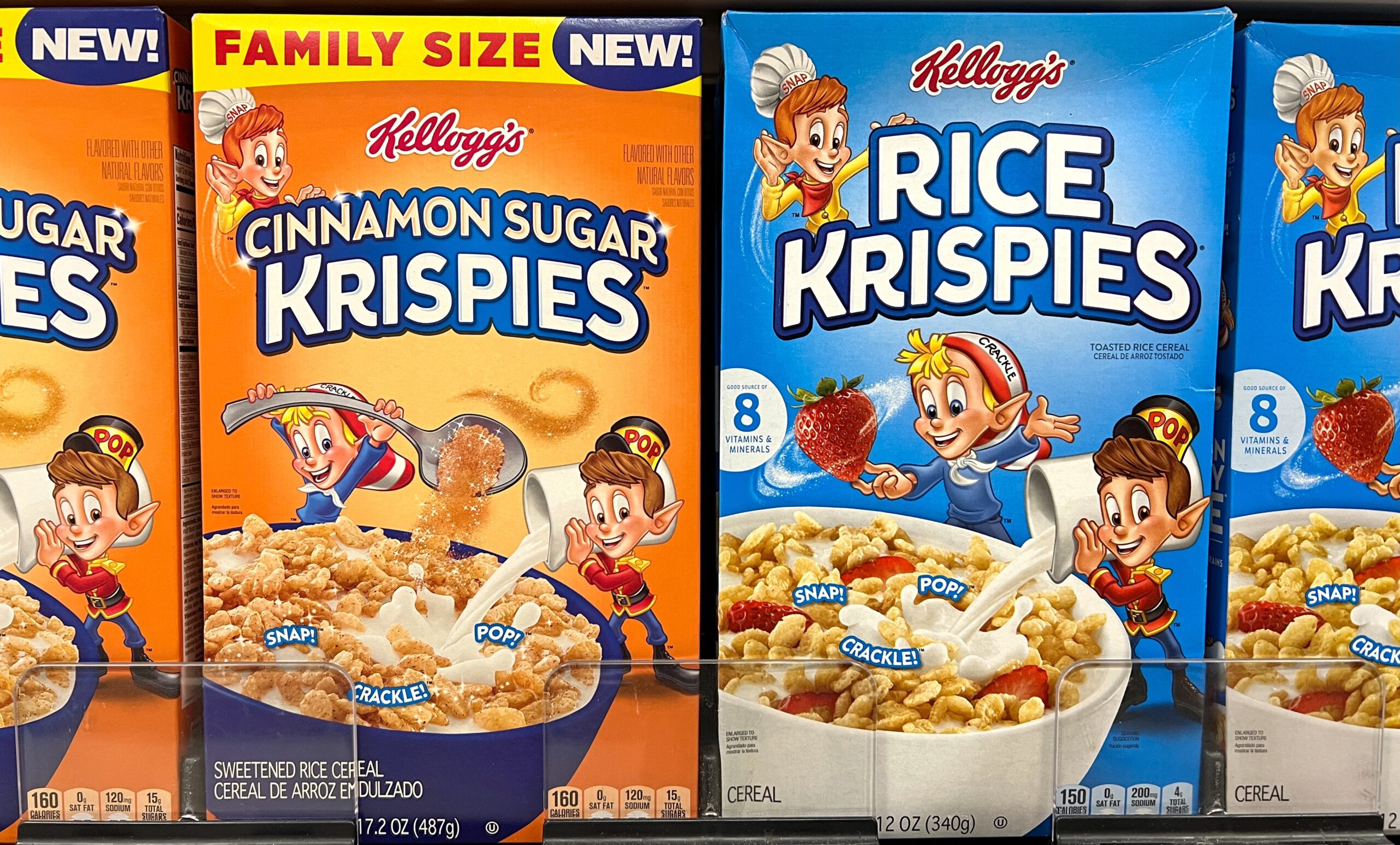Happy Friday, and welcome to Food Fix! If you’re not yet a paid subscriber, you missed a dive into the state-level push to expand universal free school meals.
Subscribe now to get smarter about food policy with two newsletters per week.
Food Fix abroad: I’m heading to the Netherlands later this month for AgriVision, and I’d love to meet some of my European readers. If you’re attending or in the area, please get in touch to schedule a meeting!
As always, I welcome feedback. What topics do you want to see covered? Was this newsletter informative? Reply to this email to land in my inbox, or drop me a note at helena@foodfix.co.
Alright, let’s get to it –
Helena
***
Today, in Food Fix:
– A look at the front-of-pack labels FDA plans to test
– USDA to crack down on certain meat claims
– Vermont becomes the sixth state to adopt universal free school meals
– House bill directs FDA to go bigger on food reorganization
***
FDA to test front-of-pack labels for salt, sugar and fat
The FDA is on a mission to determine what kind of labels on the front of food packages might encourage healthier choices.
In a wonky regulatory notice this week, the agency said it’s planning to conduct a quantitative study of 9,000 individuals to test which front-of-pack labeling schemes best help consumers make sense of foods’ nutritional profiles. It’s a significant step toward adopting front-of-pack labels in the U.S. after numerous other countries have imposed similar labels.
“Growing numbers of people experience diet-related diseases and health conditions, and the FDA has a critical role to play in helping turn the tide,” said FDA Commissioner Robert Califf in a statement to Food Fix. Califf noted that front-of-pack labels are part of the Biden administration’s national strategy on hunger, nutrition and health and said the labels “will give consumers additional information to consider when making food selections.”
Front-of-pack 101: Front-of-pack is shorthand in the policy world for front-of-package. We already have labels for Nutrition Facts on the back of food packages – a hard fought FDA achievement from the 1990s – and now one of the most reproduced graphic designs ever. (Sidenote, I once wrote a fun story on the graphic designer who was tapped by the Obama administration to revamp this design. It involved Daft Punk!)
Front-of-pack labels are touted as a quicker and easier way for consumers to get nutrition info, but there are two basic approaches to their design: First, there’s just stating facts – which some segments of the food industry do voluntarily – it’s literally called Facts Up Front. Here’s an example of what you may have noticed on a cereal box at some point:
When the food industry unveiled its voluntary Facts Up Front campaign in 2011 it was widely seen as a strategy to help stave off federal front-of-pack labeling mandates. (The Obama administration went after a long list of other nutrition policies, like mandating added sugars disclosure, but ultimately didn’t pursue front-of-pack labels.)
The other way of doing front-of-pack is to convey a judgment about a product’s relative healthfulness, like using red, yellow or green stop lights – or straight up warning labels. Here’s an example of warning labels in Chile:
These translate to: High in sugars, high in saturated fats, high in sodium, high in calories, with a mark at the bottom of each indicating they are from the Ministry of Health.
A growing body of research suggests that the judgment labels – like what Chile implemented after a bitter fight with the food industry – may be more effective than simply providing consumers with information. Not surprisingly, judgment labels are loathed by much of the food industry, and they are trickier to pursue in the U.S. due to commercial speech protections under the First Amendment.
The FDA, for its part, is looking to test a few different approaches, some in the informational camp and others that are more judgment based. One option looks very similar to Facts Up Front, the industry’s own labeling scheme, but only flags sodium, added sugars and saturated fat, with an FDA attribution at the bottom.
The agency is also looking at options including stoplight colors. Here’s one of those, both with and without the color scheme:
Here’s an option without colors that leads with “high in” at the top:
Some health advocates have urged FDA to test something even bolder, like: “WARNING: HIGH IN SODIUM,” but that is not among the options the agency is looking to test, according to the notice.
FDA outlined a handful of other options to study, including one that looks a bit like the labels Canada is adopting. Check out all the mockups and nerd out on the proposed study notice. The agency is collecting comments on its approach for the next 30 days. It will then take a look at the feedback, make adjustments, and conduct the research.
These aren’t necessarily the only options FDA could look at or eventually pursue. “It’s still preliminary,” per an FDA official this week.
In the fast lane: FDA appears to be moving quickly on front-of-pack. Last year, the agency kicked off this work by conducting focus groups and reviewing the science. The fact that FDA is already moving on to a bigger research study to me suggests that this is full steam ahead – and at an agency that typically moves quite slowly.
We don’t know about the timeline going forward – always a tricky thing to pin down with federal agencies – but per an FDA official: “It’s a priority for the agency, and certainly a priority for the administration.”
Vibe check: What do you think about these labeling approaches? Researchers, I’d love to hear your predictions for which type of label will win out in consumer testing. Send me your thoughts: helena@foodfix.co.
***
USDA to crack down on certain meat claims
The USDA announced plans to rein in claims used by meat companies about how animals were raised, like, say “pasture raised” or “grass-fed” or “no antibiotics ever.”
The agency plans to update its labeling guidance to “strongly encourage” meat companies use third-party certification to back up their claims – to essentially ensure they mean what they say.
USDA is also launching a testing project to determine whether antibiotics are being used to raise animals that are later marketed as raised without them. The project comes after research last year from George Washington University finding that some cattle processed for the “raised without antibiotics market” had in fact been treated with antibiotics.
“For those entities that are following the rules, they are disadvantaged if there are others out there that aren’t doing that,” USDA deputy undersecretary for food safety Sandra Eskin told Food Fix this week, about the agency’s moves. “It’s basic consumer protection, but it’s also basic competition protection.”
Eskin said USDA plans to release the revised labeling guidelines for substantiating claims and complete the testing project by the end of the year. The test results will help USDA decide whether to require laboratory testing to use a “raised without antibiotics” claim or whether the department should launch a new verification testing program.
***
Vermont becomes sixth state to adopt universal free school meals
Vermont is the sixth state in the country to permanently adopt universal free meals.
Gov. Phil Scott allowed the bill to become law without his signature even though he opposed the measure, arguing it was wrong to use taxpayer resources to cover meals for wealthy families. Scott reasoned it was clear the legislature would override him if he vetoed it, per reporting this week from Vermont Public radio.
Vermont follows California, Colorado, Maine, Minnesota and New Mexico. Nevada has also extended universal meals through the 2023-34 school year. Readers of this newsletter will recall the U.S. had universal free school meals during the first three years of the pandemic, but the policy ended in September. I did a breakdown of recent state actions on school meals earlier this week, in case you missed it.
***
House bill directs FDA to go bigger on food reorganization
The House Appropriations Committee advanced a spending bill this week with a directive for FDA to fully unify the agency’s human foods program under a single leader – going much further than what the agency itself has proposed.
In report language accompanying the legislation, the committee specifically directs FDA to appoint an “expert, empowered” deputy commissioner for foods with “full line authority over CFSAN, the food and feed-related activities of the Center for Veterinary Medicine (CVM), and all the food-related components of the Office of Regulatory Affairs, including inspection and compliance, food-related laboratories, import oversight, State partnerships, training, and information technology.”
If you’ve been reading this newsletter, you may recall that FDA’s proposed reorganization of its foods division doesn’t include line authority over the veterinary or inspectional arms of FDA, something consumer and food industry groups roundly criticized as inadequate. FDA officials have defended their more decentralized approach as a more modern way to run a large organization. Brush up on that debate.
About that spending bill: The legislation that advanced this week – which covers FDA and USDA budgets – contains a ton of controversial provisions, from stripping climate research and blocking DEI work at USDA to cutting fruit and vegetable benefits in the WIC program. On Wednesday the committee spent several hours debating, and at times fighting, over amendments. The Senate is not expected to agree to these hard-line provisions.
***
What I’m reading
UPSIDE Foods gets USDA green light for ‘cell-cultivated chicken’ label (AgFunder News). “UPSIDE Foods has edged closer to commercialization in the US after receiving a thumbs up from the US Dept of Agriculture (USDA) on June 12 for its ‘cell-cultivated chicken’ label, seven months after securing a green light from the FDA,” reports Elaine Watson. “GOOD Meat, which secured the FDA’s seal of approval three months ago, told AgFunder News (AFN) it has also obtained USDA approval for its cultivated chicken labels in the US, getting the green light on June 8. Both companies must now obtain a grant of inspection from USDA for their production facilities in California before they can legally sell their products in the US.”
Sam Altman backs British alt meat startup in $30m raise (Sifted). “Cultivated meat startup Uncommon, formerly known as Higher Steaks, has raised a $30m Series A round from investors including LowerCarbon, Balderton and Sam Altman, the CEO of ChatGPT-maker OpenAI,” reports Freya Pratty. “Foodtechs and particularly cultivated meat companies – which use stem cells to produce meat like substances in the lab – have seen an uptick in investor interest over the last three years. Uncommon is based in Cambridge and is developing ‘bacon’ and ‘pork belly’ products. Its round is one of the largest in the sector in Europe.”
Shoppers on food stamps buy less and go to food banks as benefits shrink (CNN). “Kroger and other chains say customers on food assistance programs like SNAP are struggling as aid shrinks,” reported Nathaniel Meyersohn. “‘Budget-conscious households are buying fewer items, particularly as SNAP benefits declined during the quarter,’ said Kroger CEO Rodney McMullen on an earnings call Thursday. ‘In some cases, we see these households switching to lower-priced products and smaller pack sizes. There’s a significant reduction in SNAP dollars in the marketplace,’ he said.”
***
Work in the food space? Comp your Food Fix sub!
Become a paid subscriber to unlock access to two newsletters each week, packed with insights and analysis on food happenings in Washington and beyond. If you work in the food world, your company or organization should comp your subscription, just like they might pay for the Wall Street Journal or New York Times. Yes, really – it doesn’t hurt to ask!
Sign up for the Friday newsletter: If someone forwarded you this email, get the free Friday edition yourself.
See you next week!

